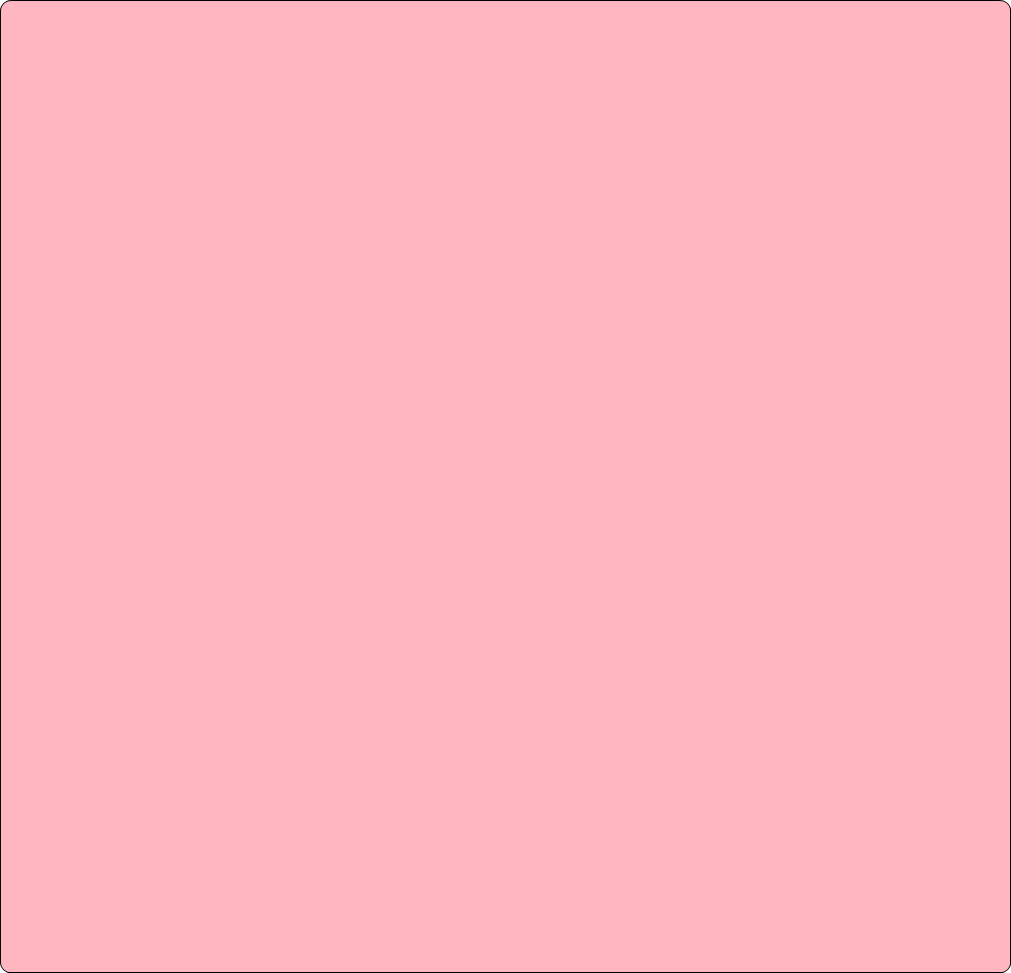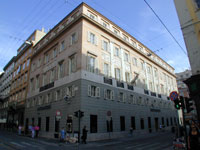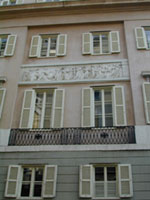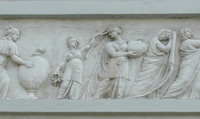Casa Fontana (1807 - 1808)
via Roma 5
Arch. Matteo Pertsch
This building was built for Giovanni Battista Pitteri, but after a short time (perhaps already under construction) the building was purchased by Carlo d'Ottavio Fontana, a rich exponent of Trieste's economic life. In 1808, Fontana inaugurated a hotel here, as advertised in four languages. Since 1948 it has been owned by the Banco di Sicilia, which in 1974 moved its headquarters there. The general layout, built with elegant majesty, displays characteristics very close to the language of Matteo Pertsch (Wolfgang Bensch in his 1974 essay, in fact, reports having discovered documents that would attest to the authorship of this building to Pertsch, who in 1807 he applied for and obtained permission to build it, but the project is not preserved in the local archives, but from a stylistic analysis this attribution seems very plausible).
The building develops its fronts on three streets, turning the main facade on Via Roma. The main facade presents the insertion of relief panels, interrupted by the intersection of the pilasters and the development of a high base in which the first floor is inserted, with the consequent distinctive connotation of the second, it is a characteristic note of Pertsch's language, found also in his other works.
The prospect develops in its amplitude punctuated by three decorative nuclei, identified by the re-entrant mirrors adorned with bas-reliefs and smooth ionic pilasters of giant order. These are set on the wide string course, which runs along the whole building at the wrought iron balustrades with a fake balcony.
On the short sides, although the motif of the pilasters is missing, the color effect remains, created with almost geometric simplicity in the revised mirror, divided by the continuous relief panel. A very protruding cornice separates the top floor (likely to be carried out during construction), where all the windows are inserted in recessed square mirrors with a result of extreme liveliness. The rhythm density of the openings, perhaps due to the original destination of the hotel building, makes the development of the decorative discourse in which it participates very pleasant, bringing a dynamic scanning effect to the whole.
The bas-reliefs were carved around 1808 by Antonio Bosa. The themes are taken from the usual ancient repertoire: bacchanalia, sacrificial altars, players, shields, spears. It is difficult to give them precise meaning. On the facade located on Via Roma we recognize Perseus triumphant over the Medusa and Penteo killed by the Menadi.












